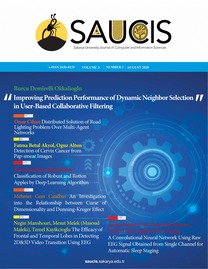Energy Saving and Life Cycle Analysis of a Daylight-Linked Control System
___
[1] B. M. Sanderson et al., “Community climate simulations to assess avoided impacts in 1.5 and 2 degree futures,” Earth Syst. Dyn. Discuss.; vol. 8, pp. 827-847, 2019.[2] International Energy Agency. “Tracking Buildings,” OECD/IEA, Paris, France, 2020. [Online]. Available: https://www.iea.org, [Accesed: June 2020].
[3] M. A. ul Haq et al, “A review on lighting control technologies in commercial buildings, their performance and affecting factors,” Renewable and Sustainable Energy Reviews, vol. 33, pp. 268-279, 2014.
[4] L. Bellia et al, “Why are daylight-linked controls (DLCs) not so spread? A literature review,” Building and Environment, vol. 106, pp. 301-312, 2016.
[5] A. Williams et al., “Rubinstein Lighting controls in commercial buildings,” LEUKOS – J Illum Eng Soc N Am, vol. 8, pp. 161-180, 2012.
[6] D. H. W. Li et al., “An analysis of energy-efficient light fittings and lighting controls,” Appl Energy, vol. 87, pp. 558-567, 2010.
[7] T. M. Chung et al., “Office Lighting Retrofit Using Dimmable Electronic Ballasts and Occupancy Controls,” HKIE Transactions, vol. 8(3), pp. 8-15, 2001.
[8] N. Guillemin et al., “An innovative lighting controller integrated in a self-adaptive building control system,” Energy and Buildings, vol. 33(5), pp. 477-487, 2001.
[9] S. Onaygil et al., “Determination of the energy saving by daylight responsive lighting control systems with an example from İstanbul,” Building and Environment, vol. 38(7), pp. 973-977 2003.
[10] M. R. Atif et al., “Energy performance of daylight-linked automatic lighting control systems in large atrium spaces: report on two field-monitored case studies,” Energy and Buildings, vol. 35(5), pp. 441-461, 2003.
[11] R. Delvaeye et al., “Analysis of energy savings of three daylight control systems in a school building by means of monitoring,” Energy and Buildings, vol. 127, pp. 969-979, 2016.
[12] M. Demirbaş et al. “Investigation of Energy Saving Performance and Other Related Parameters of a Daylighting Scenario for an Industrial Building,” Light&Engineering, vol. 25(2), pp.51- 55, 2017.
[13] International Energy Agency, “Daylight in buildings a source book on daylighting systems and components, A Report of IEA SHC Task 21/ECBCS Annex 29, 2000,” 2000. [Online]. Available: https://www.iea.org, [Accesed: July 2020] .
[14] C. Labuschagne et al., “Sustainable project life cycle management: the need to integrate life cycles in the manufacturing sector,” Int J Project Manage, vol. 23, pp. 159–168, 2005.
[15] S. N. S. B. Bakri et al., “Life cycle assessment of magnetic and electronic ballast for 36-W fluorescent lamp,” Int J Life Cycle Assess, 15:837–841, 2010.
[16] International Energy Agency, “Countries: Turkey,” 2020. [Online]. Available: https://www.iea.org, [Accesed: July 2020].
[17] Ministry of Energy and Natural Energy Sources, “Energy Balance Sheets (2019),” 2019. [Online]. Available: https://www.eigm.gov.tr, [Accessed May 2020].
- ISSN: 2636-8129
- Yayın Aralığı: Yılda 3 Sayı
- Başlangıç: 2018
Adding Virtual Objects to Realtime Face Images; A Case Study in Augmented Reality
A New Hybrid Filter Approach for Image Processing
Bekir AKSOY, Osamah Khaled Musleh SALMAN
Review on Bitcoin Price Prediction Using Machine Learning and Statistical Methods
I.Sibel KERVANCI, Mehmet Fatih AKAY
Generative Networks and Royalty-Free Products
Energy Saving and Life Cycle Analysis of a Daylight-Linked Control System
Ceyda AKSOY TIRMIKÇI, Cenk YAVUZ
On Term Weighting for Spam SMS Filtering
Finding the Relationship Between News and Social Media Users’ Emotions in the COVID-19 Process
Ahmet Anıl MÜNGEN, İrfan AYGÜN, Mehmet KAYA
Estimation of Constant Speed Time for Railway Vehicles by Stochastic Gradient Descent Algorithm
